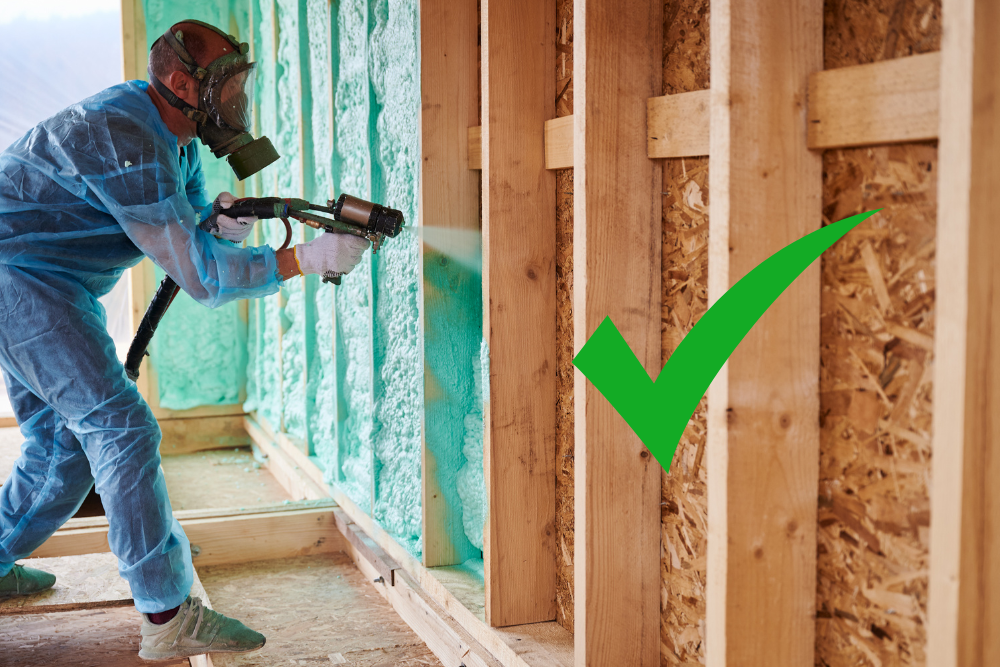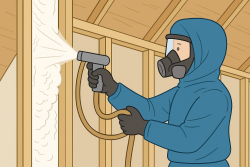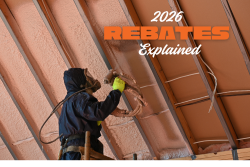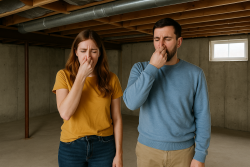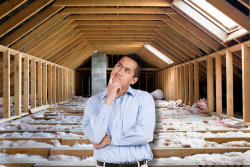As we increasingly experience the impacts of climate change and extreme weather, addressing its effect on residential roofing systems is crucial. With shifting weather patterns and more frequent severe conditions, homeowners are now more concerned about the resilience and longevity of their roofs. Contractors must recognize how climate change influences residential roofing and take steps to mitigate these effects.
Environment and Climate Change Canada data shows that the nation's average temperature has risen by approximately 1.7 degrees Celsius since 1948, nearly double the global mean increase. This temperature rise significantly affects roofing materials, particularly asphalt shingles, which deteriorate faster at higher temperatures.
Aggressive tornadoes, hailstorms, and heavy snowfalls threaten roofing materials. Standard asphalt shingles or wooden tiles may not withstand hail or substantial wind uplift. This drives demand for durable materials like metal roofing or advanced polymers that endure extreme weather.
The Importance of Insulation Beneath the Roof
The need for adequate insulation solutions is growing, especially in roofing systems. Insulation's primary role is stabilizing indoor temperatures by reducing heat flow, but climate change introduces new challenges. Colder climates may experience more freeze-thaw cycles, causing materials to expand and contract, thus causing leaks.
Therefore, roofing systems must use materials capable of withstanding more comprehensive temperature ranges. Spray foam insulation, known for its thermal resistance and water-resistant properties, is increasingly seen as a solution to various climate-related challenges.
Addressing Increased Temperatures
A clear manifestation of climate change is the rise in global temperatures. Spray foam insulation is highly effective in maintaining indoor temperatures, providing a thermal barrier crucial in colder Canadian climates. With a high R-value, spray foam insulation excels in energy-efficient buildings. As global temperatures rise and air conditioning becomes more necessary, roofs with high-performing thermal insulation can significantly reduce energy consumption. Spray foam forms a seamless layer, minimizing thermal bridging and maintaining stable internal temperatures regardless of external conditions. It also provides:
- An air barrier.
- Eliminating potential air infiltration and heat loss.
- Thus lowering energy costs and reducing the building's carbon footprint.
Coping with Extreme Weather Events
Global climate change has increased frequency and severity, including tornadoes and storms, threatening the structural integrity of residential roofs. High winds can damage roofing materials or cause debris impacts, leading to immediate damage. Heavy rainfall can pool water, resulting in leaks and structural issues over time. Statistics Canada reports rising economic costs of weather-related disasters, reaching $1.9 billion in 2018, with residential homes often bearing the brunt. Wind damage accounts for nearly 25% of all homeowner property losses, necessitating more robust roofing materials to withstand extreme conditions.
While spray foam is resilient, its effectiveness depends on the durability of the roofing materials covering it. Damaged covering materials can expose the insulation to elements, compromising its effectiveness. However, spray foam applications in unvented roof assemblies or cathedral roofs have shown considerable resilience. The material's adhesive properties enhance wind resistance and structural strength. In unvented roof assemblies, spray foam increases wind uplift resistance. Because of its flexibility, it can expand or contract in response to temperature fluctuations, protecting it from freeze-thaw cycles.
Dealing with Snow, Precipitation, and Hail
Due to climate change, weather is becoming more unpredictable, which leads to more frequent hail and snow. Hail causes visible damage, while snow accumulation adds weight to the roof structure, risking collapse in extreme cases. The snow melting and refreezing cycle can create ice dams, causing leaks and water damage.
Canada's Changing Climate Report (CCCR) notes increased precipitation, especially in winter, adding snow loads on roofs and raising structural integrity concerns. For example, Ontario's Building Codes require roofs to withstand a snow load of 1.4 kPa (about 29 pounds per square foot). Still, roof failures due to snow accumulation have been reported, indicating a need for revised guidelines.
Hail-related insurance claims have surged. The Insurance Bureau of Canada (IBC) reported $2.4 billion in insured damage from severe weather in 2020, with hail accounting for a significant portion. Regions like Alberta have seen an increase in hail incidents over the past decade.
The primary cause of snow dams is uneven melting on the roof. Higher temperatures at the roof's peak cause snow to melt and flow downward, refreezing at colder edges. Spray foam insulation maintains a consistent thermal profile across the roof, reducing temperature differentials and preventing snow and ice dams.
Managing Humidity Levels
Increased humidity can cause wooden roof structures to rot, weakening overall roof integrity. Mold and mildew can also grow at high humidity, affecting the roof and indoor air quality.
Rising precipitation levels raise concerns for various insulation materials, including spray foam. Water infiltration can compromise insulation's thermal performance, reducing energy efficiency and causing damage. However, closed-cell spray foam is less susceptible to moisture infiltration, which is advantageous in a changing climate.
Water intrusion is one of the most damaging and costly roofing concerns. Spray foam insulation offers a seamless, monolithic surface with no joints or seams where water can infiltrate.
Integrating Spray Foam Insulation in Roofing Systems
Spray foam insulation can help address climate change challenges in construction. Its high R-value makes it ideal for energy-efficient homes, reducing carbon footprints. New spray foam formulations are more environmentally friendly, with blowing agents with lower Global Warming Potential (GWP).
Roofing Systems Benefiting from Spray Foam Insulation
Traditional Pitched Roof Systems: In traditional roofs, spray foam insulates the attic or loft space, sealing gaps and cracks and improving thermal performance, especially in older homes.
Flat Roof Systems: Flat roofs benefit from spray foam's adherence to various surfaces, forming a seamless layer that improves thermal and vapour barrier performance.
Metal Roof Systems: Spray foam significantly benefits metal roofs by providing high R-values, reducing thermal bridging, and enhancing insulation.
Cathedral and Vaulted Ceilings: Spray foam is ideal for homes with limited space for traditional insulation. It provides effective insulation without compromising architectural integrity.
Retrofitting and Renovations: Spray foam is popular in retrofitting older homes, filling gaps and improving insulation in irregularly shaped roof systems.
Green and Sustainable Roof Systems: Spray foam is integrated into green roofing systems, contributing to energy efficiency and sustainability.
Adapting to Stricter Building Codes
Climate change has led to stricter building codes, especially regarding energy efficiency and carbon emissions. Some jurisdictions mandate higher R-values for insulation in new buildings or significant renovations, influencing the choice of insulation materials.
Spray foam insulation is versatile and practical in various roofing systems, enhancing efficiency and durability. Its application methods may vary, but the goal is to create a thermally efficient and airtight space, improving home comfort and contributing to energy savings.
Reitzel Insulation is committed to providing high-quality spray foam insulation solutions to meet the challenges of climate change and improve home performance. Contact us today to learn more about how we can enhance your roofing system's durability and efficiency.
